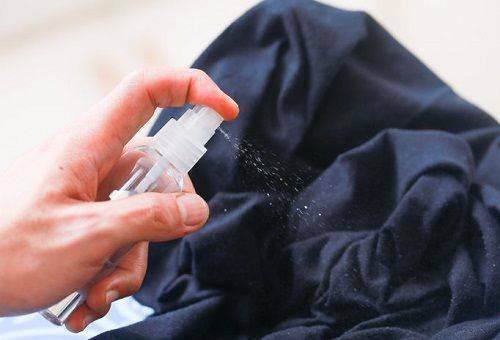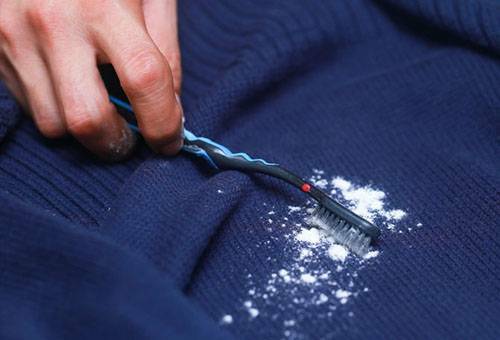Lafitniki - an unusual name for the dishes, but so called glasses, goblets on the leg. Their main feature is the tulip shape. Its name lafitnye glasses got through aristocratic red wine Château Lafite. Over time, more of them was used for vodka, but the name and left.
Elegant wineglass on a thin stalk familiar to many fans of feasts.
Content
- 1 History lafitnoy glasses
- 2 On what producers should pay attention to?
- 3 Lafitnoy kinds of dishes
- 4 Features of use lafitnikov
- 5 VIDEO: Lafitnye glasses for alcohol.
History lafitnoy glasses
Chateau «Lafite-Rothschild» Wine of the late 19th century. The French region of Bordeaux famous vineyards Payyak commune. Rothschild family bought the vineyards in 1868, and since then the full name on the bottles was specified their name.
Few people know that this cookware has its own unique name, which can often be found in the literary works of the Russian classics.
Lafite brought to Russia only in the king's house. The price was so high that the common people could not afford. It was under him, and were created by small exquisite glass wine glasses on the weighted leg to cut and thread.
Exquisite wine served slightly warmed to meat dishes.
Later similar products more simple form without decorations began to be used for other fine wines, but the name and the left - lafitnaya glass. Different size was - 50, 75, 100, 125 and 150 ml, even though the glass while there was no cheap material. In addition, each item was made individually by hand, which further increases the price.
Nowadays, the term "lafitnaya glass" is used in respect of any utensils for alcoholic drinks made of tulip-shaped thin glass or crystal.
If aristocrats could afford, they ordered a variety of jewelry. Wizards blew the desired shape immediately with the foot, painted, decorated with carvings, polished. Trademark has been cut. Just tinted glass, giving a greenish, bluish, blue and red hues rarely.
Initially lafitnikami common people called small glasses of expensive red wine Chateau «Lafite-Rothschild» in France.
In the early 20th century lafitnye glasses become more accessible. They learned to make on the molded glass technology on the machines. Remembering Tsarist times people were often acquire lafitniki. In addition, there were more interesting products of crystal. 50 and a glass 75 ml people no longer used for wine, and for stronger beverages, mainly for vodka.
Given the price of the drink afford "to drink a glass of Lafite" could only wealthy people.
Currently lafitnaya glass, by definition, any glassware or crystal in the form of a "tulip" on the leg. And if there was a desire to acquire such an interesting subject of luxury, then you should know a few features.
Unfortunately, history has not preserved the name of the master, to design lafitnika.
Character traits:
- the presence of faces;
- leg can be of any length - low, medium and high;
- capacity of 25 to 150 ml;
- used for decoration engraving, gilded faceting, monograms, carving, inlay;
- usually transparent, but can be shades.
Technology of production of this ware was quite difficult.
Despite the fact that the basic material of these glasses glass, special demand, and is now attracting the attention of their crystal products. Game faces light could not help but attract attention. Transparent cold vodka or any of the wine in a crystal bowl fascinating sparkle, making meal a pleasure. In addition to the shot glasses you can find additional dishes - decanters, seledochnitsy, small trays are decorated in the same style.
In the nineteenth century, each glass is made by hand in the workshop of the glazier.
On what producers should pay attention to?
Dyatkovo crystal factory - founded in 1790 and is still working. Famous for the fact that along with the machine production has not lost ancient technology manually lafitnogo case. The quality and fineness of execution and to date, the main feature of the plant.
At first wine glass was blown, and after - granite, giving it a distinctive shape and polished.
It is worth paying attention to the Belarusian plant "Neman". They released miniature wine glasses 25 ml. Called merchant lafitnikom to sip, not to get drunk. Produce gift baskets. Utensils of the plant is very good quality and at affordable prices.
Later, with the advent of molded glass processing technology, glass lafitnik it became available not only rich, but also to other segments of the population.
Lafitnoy kinds of dishes
Share lafitniki in size, it also depends on the use.
- 25-35 ml - suitable for liquors, brandy with a vintage species feeding of coffee, tea or a dessert;
Best option - 25 or 50 ml.
- 50 ml - fed vodka, bitters, brandies, liqueurs;
Glass-stack on the leg looks very elegant, and will be a real decoration of the table.
- 75 ml - suitable for supplying strong and sweet wines such as Kagor, Madeira, port, nutmeg;
To use fortified or dessert wine glasses is appropriate to take lafitnye less - 75-100 ml.
- 100 ml - is used to dry and semi-dry white table wine (Aliquot, Chardonnay, Chablis, Riesling) for feeding the fish, white meat;
They are suitable for drinking and domestic liqueurs and cordials - mountain ash or cherry.
- 125 ml - suitable for dry and semi-dry red wine table (Mukuzani, saperavi, Bordeaux, Beaujolais) for supplying hot core of meat or cheese;
For sweet and semi-sweet beverage glasses used volume of 125-150 ml.
- 150 ml - fed champagne.
There are also more spacious instances, but they are not as popular.
Features of use lafitnikov
The transparency of glass or crystal faceted necessary conditions glow glasses. Even the stained material has to be as transparent as possible. The more complex decoration products, the more will have to be given time. Difficulty advances depends on the length of the legs.
Initially, the basic material for the manufacture of such glass dishes served.
Modern dishwashers have a delicate "Crystal" mode, but may damage the product. Hard exclude the presence of microcracks, their presence may lead to the partial or total destruction. In addition, many detergents contain abrasive particles of the abrasive surface of the cookware. Over time, such use will lead to the formation of haze, and glasses will lose its special shine.
Crystal lafitnaya glass was a rare jewel, the prerogative of kings because of the high cost and incredible beauty.
When using the four basic rules lafitniki long will please its superb unique appearance.
Of them are not only pleasant to drink, but also to admire the play of sun on the fine line.
- If the glasses were covered with dust, simply wipe them dry with a paper towel. Improve efficiency adding potato starch. His small amount must be applied to the surface and rub with a dry cloth.
Lafitniki dust can be cleared using potato starch.
- Minor contamination is easily removed with water and soap. Just a little drop of detergent, to briefly leave the product in the resulting liquid. Rinse with clean running water. Towel dry with glasses.
Minor contamination can be removed with soap solution.
- Fatty help remove traces of potato broth. Suffice it to 4-5 in the small tuber peel boil in 2 liters of water. In barely warm liquid to put on a few hours lafitnye devices. After washed in soapy water.
Remove fatty plaque will help potato broth.
- Heavily soiled glasses completely immersed in vinegar solution for 15-20 minutes. In 2 liters of diluted 1-2 tablespoons. This same technique destroys green plaque. After soaking sufficiently rinsed with running water and rub glasses.
If the glasses are extremely dirty, or inside them formed a greenish patina, it will help deal with the problem vinegar.
No matter how much time has passed, lafitnaya dishes will continue to attract attention. Large selection of glasses, glasses, wine glasses on the stem for any holiday is always decorate the table and make the atmosphere pleasant and positioning.
Lafitnaya glass - it is a beautiful, elegant dishes with a rich history.



